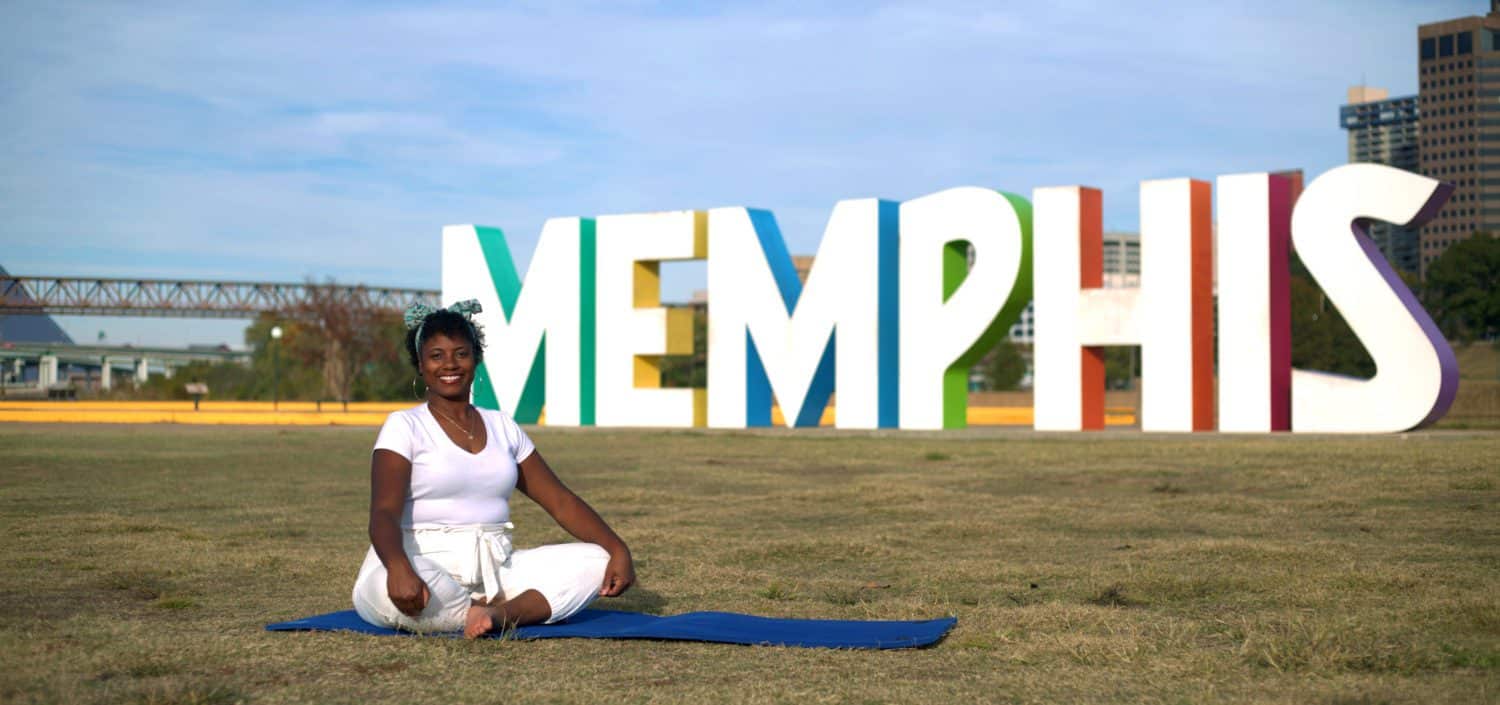Expanding the Present with Yoga Nidra
Yoga has graced my life for over 20 years. At first, I was drawn to it for the feeling of stretch and movement—so natural and sublime—and the peaceful mind-space afterwards. As I continued taking classes, different aspects of the lifestyle—meditation, pranayama, kirtan music, the idea of guru—crept in through a single, special place called the Shakti Yoga Center in Staten Island, New York. The studio was housed in a one-floor bungalow in between two low-rise residential buildings, steps away from the New York Harbor. As I grew into this sangha, one regular class became a cherished routine: Friday morning Basic Yoga, taught by Clarissa (Sevika).
Around 2007, my favorite class began to change. Sevika began extending the savasana time at the end of class, sneaking in this curious guided instruction: “…bring awareness to the right hand thumb…second finger…third finger…” and so on through the entire body. Eventually, Yoga Nidra became our regular savasana.
The effects were subtle and powerful, but I didn’t really know that yet; I only knew that I felt good in ways beyond physical. Over the next few years, I continued my Friday morning ritual and regular conversations with Sevika, learning about the Bihar School Yoga Nidra book, with its lovely blue cover.
At home, I began regular self-guided body scans to help me fall asleep through post-traumatic stress. I wondered about yoga teaching, eventually asking about yoga training. Sevika recommended, without hesitation, the month-long residency training at Yogaville. Something significant was happening to me beyond the ordinary egoistic leanings to “acquire” the 200 hours—but at the time, only an inkling. I knew, but I didn’t know. The energies of post-trauma and regular yoga classes were coalescing into an expansion of mind and spirit. And Yoga Nidra reminded me of the body at the center…the whole body…the whole entire body.
In 2010, I experienced Yogaville for the first time. The next year, I trained in Restorative Yoga with Judith Lasater in New York City, and just recently, completed Yoga Nidra certification with Julie Lusk at Yogaville online. With each training, and the myriad of life experience in between, my journey continues into the depths of koshas, or energetic body-mind levels.
Much of the time, we operate in the outer koshas corresponding primarily to the physical and emotional. And why wouldn’t we? Our human experiences begin here, in our bodies: at birth is our first experience of cold air, developed lungs engaging, the feel of skin against our own. We can barely handle the gravity of our own bobbling heads. Touching and pulling fingers apart in the bubble bath is a brand new experience. The first feeling of sand on the bottoms of the feet…remember?
When our bodies first come into this world, embodiment is all we know. The body and primal emotions define early life; this is our bread, our grounding. As we grow up, the senses expand. We develop more sophisticated vocabulary for emotions. Our minds become more complex, experiences become more varied, and they build on each other. The body, mind and emotions might separate, all too easily, within cultural norms.
Yoga Nidra, and its journey into the parasympathetic nervous system, invites our mind deeper into the koshas that include the breath, intuitive mind and joy—an opportunity to reunite the body, mind and emotions. This practice can feel like venturing into a cave, spelunking into unknown territory. Through withdrawal of senses, we invite those senses to check out for a while and allow the inner journey.
The “mostly physical” outer koshas start as a major part of our lives, and venturing into that cave implies a journey into a smaller and smaller space, into a dot: large to small. But it’s really the other way around. As we go more central, through emotional-intuition-bliss koshas, the moment itself expands. Presence expands. The dot is really a tiny doorway into something much bigger than the body-mind. Like the Big Bang starting with a point of energy-mass, when we tap into that dot, our inner universe begins to expand. Our bread becomes breadth. And the added bonus: breath is rolled up in there, too!
Does this expansion downplay the daily experience of body and mind? Maybe, but the fact remains that the body is the gateway. We cannot withdraw senses that don’t exist. In his “Allegory of the Cave”, Plato describes the opening of the eyes into light by a “turning [of] the whole body.” The Allegory’s context is education, and the body and mind come to “learn” Yoga Nidra in an analogous way.
And as for education, this is best done when the whole body and spirit turn together towards that light, the essence of self, or opening into “the brightest region of being” (Plato): peace, joy and bliss. And the mind does learn, for these feelings will tend to autonomically spill into our daily life. How lucky we are! And once again: we know, but we don’t really know, the ultimate effects of spiritual practice. We only know this is what God intends for us: to be open, loving, and internally expanded. Yoga Nidra is one path, a practice for which I am forever changed and especially grateful to Yogaville, Shakti Yoga, and (especially) Sevika—for generously sharing her own expanded spirit.
References
- Saraswati, S. Yoga Nidra. Yoga Publications Trust, 1993.
- Plato. “The Allegory of the Cave.” P. Shorey (translator) from Plato: Collected Dialogues. Random House 1963, pp. 750-751.



